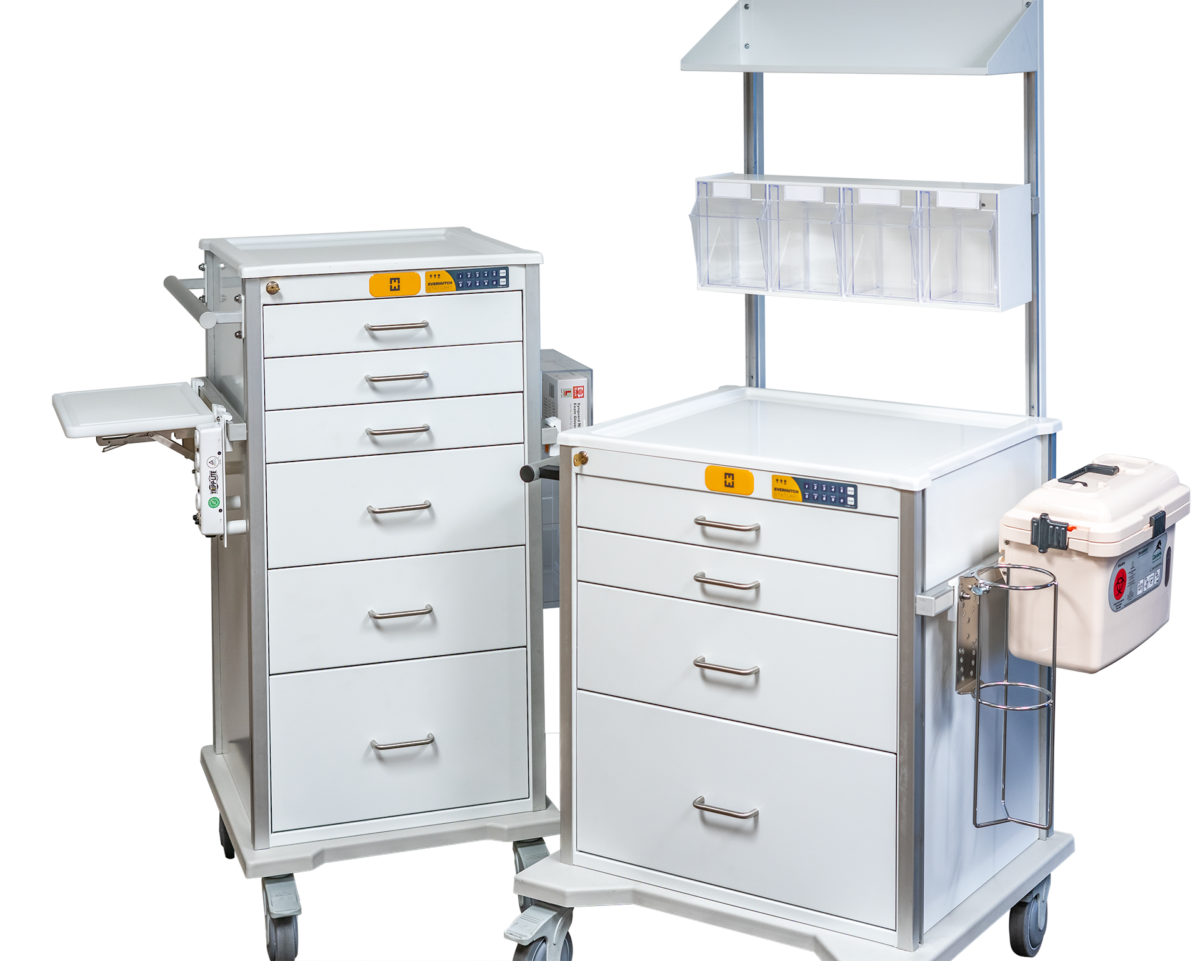All types of medical carts are important in a variety of healthcare settings. Crash carts, also called code carts or emergency carts, are particularly essential because of their role in life-threatening situations. These are the carts used when someone stops breathing or their heart stops, and time is of the essence if you want to save the patient. The medical crash cart is designed with specific features to ensure its effectiveness.
The medical crash cart is easily identified
In a medical environment that also contains generalist procedure carts, anesthesia carts and isolation carts, it can be difficult to identify which carts contain which supplies. That is why different types of carts are designated by different colors. Crash carts are a striking shade of red to make them easy to spot from across the room and impossible to confuse with other cart types.
Maneuverable
When there is an emergency, you need to be able to transport supplies to the site as quickly and efficiently as possible. Crash carts are designed for maneuverability. The swiveling casters allow you to navigate narrow or crowded corridors and tight corners with relative ease, especially because the cart as a whole is lightweight.
Stable
Once you have reached the site of the emergency, those swiveling casters could easily become a hinderance. You need the cart to remain stationary so you can easily access the supplies and equipment you need. This is why the casters have a locking mechanism to ensure stability when required.
Choice of materials
The materials used in crash carts, particularly steel, are chosen to be strong, durable, and able to withstand the bumps and scrapes that are common in fast-paced healthcare environments. They are also relatively easy to clean, which is highly important in a setting where infection control is paramount.
Secure
Drugs, sharp tools and expensive equipment can all be tantalizing to thieves, which means that medical supplies all need to be stored securely, even if they do need to be accessible in emergencies. This is especially true in places like emergency rooms, with many different people passing through. Medical crash carts, like similar storage units, come with a variety of possible locking mechanisms. This could include a manual key, an electronic keypad, a swipe card or some combination of different methods. Drawers and cupboards need to be locked, but so does the waste disposal unit.
Can hold all essential supplies
Crash carts, like other medical carts, are fundamentally a form of storage that can be used to transport medical equipment through the facility. As such, they can contain various configurations of drawers, cupboards and shelves, in addition to having a flat work surface on top. This allows them to store everything you could need when someone crashes, including basics such as medication, syringes and scalpels, along with more specialized equipment such as intubation kits and defibrillators. There is also space for personal protective equipment (PPE) such as gloves, masks and gowns, and a secure waste disposal unit for when supplies are no longer needed.
Conclusion
No emergency medical setting would be safe without a crash cart. Not only does it carry all the essential supplies needed to deal with someone who is crashing, but it has the combination of maneuverability, stability, resilience and security that ideally suit it to a fast-paced medical environment with many different people. Easy to identify and easy to clean, the crash cart is specifically designed for emergency rooms and similar settings.

Comments are closed.